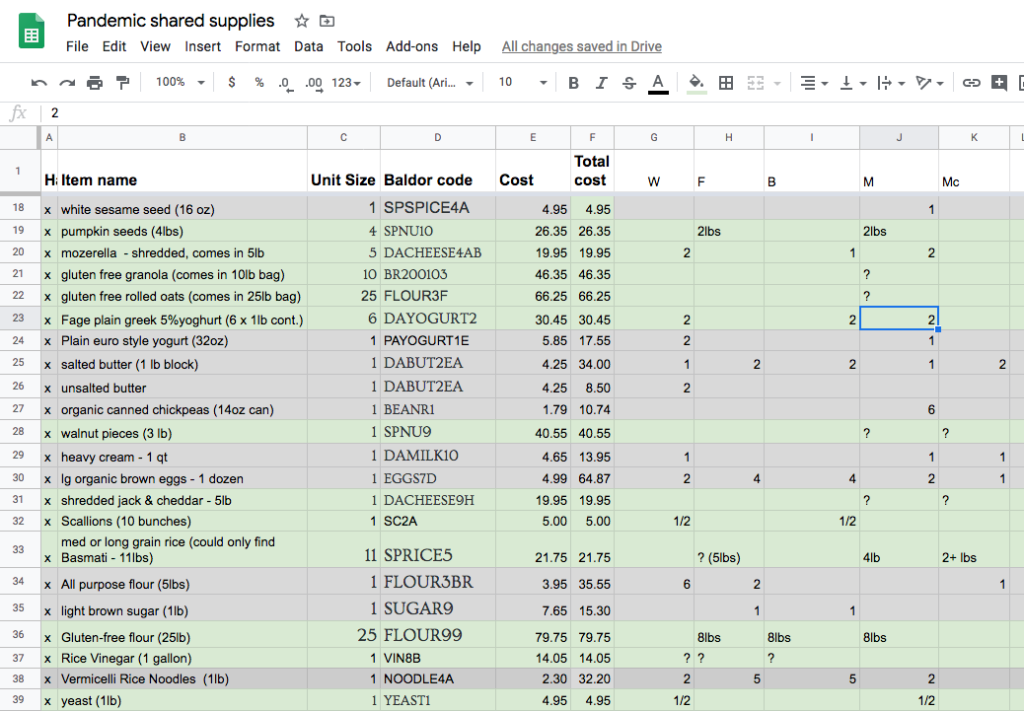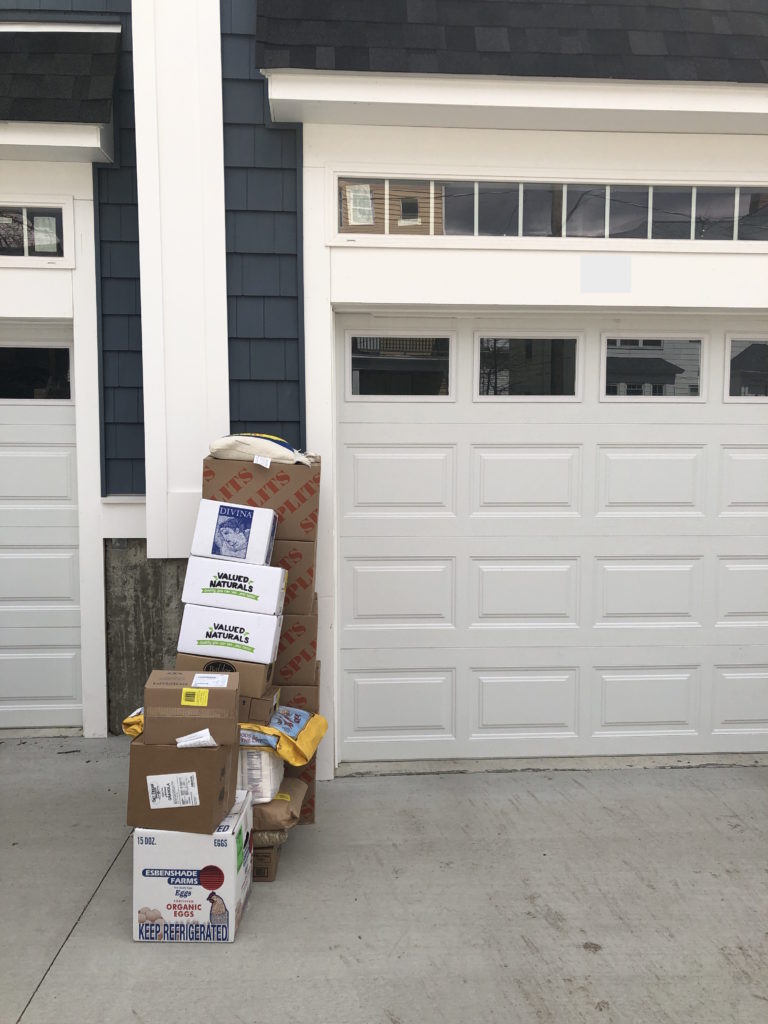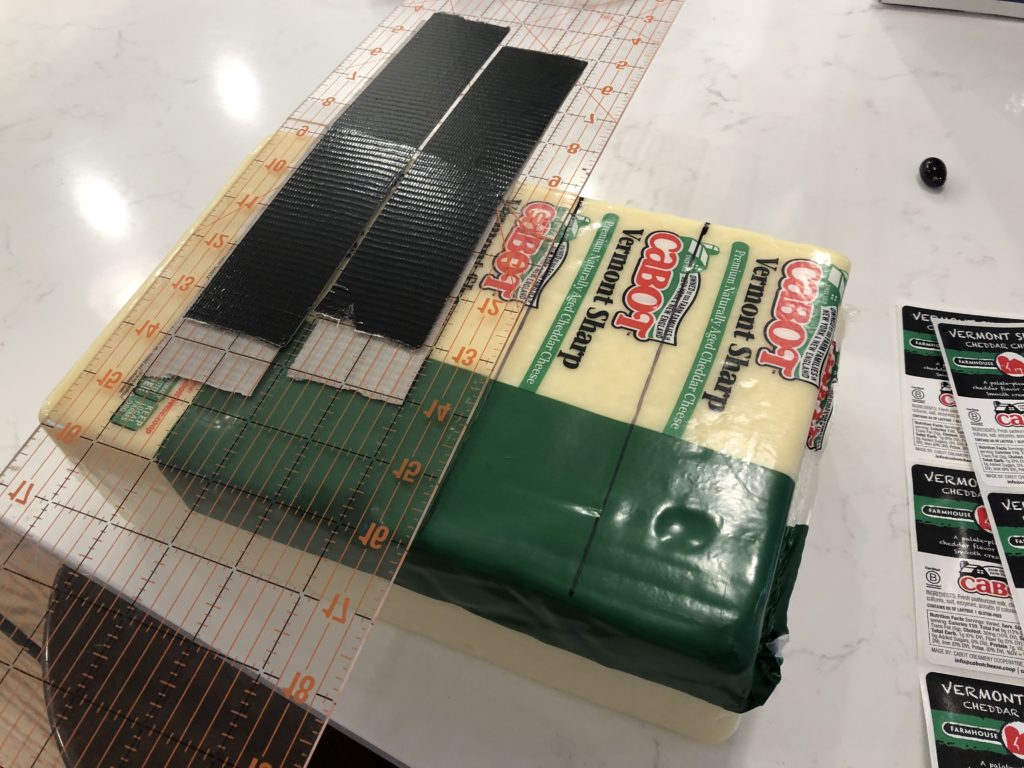How to: split an order of bulk food
I got word that a regional restaurant supply company had pivoted to serving residential homes, with next-day, free shipping. The catch? Well, catches? A $250 minimum order, and many of the items are in restaurant-size amounts. I could use some cheese — but did I need a wheel of Brie? (Sadly I had to admit to myself the answer is no.)
Motivated to avoid the grocery store (for the germs, the lines, and the lack of staples) I asked four local families if they’d want to go in on an order. We totally made this work for us, and I wanted to write down the things we figured out — and maybe this will be helpful to others who want to consider it but hadn’t gotten to this level of commune living yet. 😀
I set up a shared Google spreadsheet where people could add items they’d like to buy, and how much of that item they’d like. That way other families could go back to the list and add themselves to get some of that item.

Over the course of about 5 days, we all found time to look through the restaurant delivery website to add items and look at what others had added. One important little point was the suggestion to have a deadline, so we’d all know when we needed to have this done by. In these strange times, it felt good to make the expectations clear so we knew how to participate well and decide if we could find the time.
Another clutch move was to use a spreadsheet, because it meant we could divvy up the amounts easily, and everyone knew how much they’d owe.
So, once everyone had added all the items they were interested in, I looked at what items were “individual” – meaning they aren’t a bulk item, like a 5lb bag of flour. I color-coded those as grey. Any individual item is easy to order, because we just get the number people signed up for.
Slightly more difficult is the big-ass bulk stuff. 10 lbs of olives is a lot of olives. Those of us who decided to go in on the olives looked at how many pounds we’d be willing to get, and we agreed to the poundage you see in the screenshot.
So what about the bulk items that people wanted that didn’t get enough takers to feasibly buy? I messaged the people who had signed up for the items, and asked if they wanted to buy it all themselves. In some cases, like with the 10 lb bag of gluten-free granola, the answer was yes. With other items, like the box of 600 tortillas, the answer was no and I color-coded the item as blue and moved it to the bottom of the spreadsheet.
There were also items that people had added that had become unavailable. These were color-coded red and moved to the bottom of the spreadsheet.
By Tuesday (our self-imposed deadline), everyone was ready. I looked at the sheet for any items that could be mistakes, or where there was a lot of interest. We used a big ol’ group email thread for most of the communication, except where I messaged each family contact individually to ask individual questions. I felt reasonably confident that we were ready to put in the order.
It was time to use the website to put in the order. In the screenshot above, you’ll see in column A there is just an x. That was my way of keeping track of which items I had ordered — I wanted a way to double check, because I was ordering so many different things. I felt nervous when I was done and ready to check out, because I hadn’t had anyone check my work. I hadn’t talked face-to-face with anyone. I went over the online shopping cart twice. I was afraid I’d accidentally order 50 lbs of sawdust or something. The total of our group purchase was just of $1,000.
We made a plan to split up the bulk food. This would be a bit of a logistical bear in The Before Times: pouring and measuring lentils, shaking out shredded cheese into bags, counting and recounting egg cartons. The pandemic twist was that the floor was lava. Just kidding — but it felt like we couldn’t adequately account for all the ways that tiny little virusy bits could show up on the order, or possibly be in or on each of us.
Tangent: what is the technical name for “tiny little virusy bit”? I just looked it up. It’s “virion”.
https://www.merriam-webster.com/dictionary/virion
Have I mentioned that everyone involved were absolute champs about this? Everyone looked at what they’d ordered, and scrounged up containers to put their incoming bulk items into. There was a beer growler for olive oil, Mason jars aplenty, washed takeout containers, and a lot of Ziploc bags. Many folks pre-labeled their containers with their names. They brought big bins/Ikea totes/boxes to hold everything. They brought kitchen scales, peel-and-stick labels, and funnels.

In a move that is both smart and covid-coping, I printed out a sheet for each family and highlightered the items they should receive. Once everything was in their box, I used the sheet to tick each highlighted row to make sure they got everything on their list.
This was the first time I’d needed a highlighter since grad school. If I were to do this again, I would have only printed the column with that family’ numbers rather than all family numbers, which would have been easier to follow.
Hot tip: spreadsheet programs have the slick ‘print selected cells’ choice to just print what you want, rather than changing the whole sheet to print what you want.

The shipment arrived around noon. We started at 12:30pm, and were wholly done by 4pm. It was 40º outside, so I didn’t worry about getting cold foods dealt with fast. If we did this in, say, July, it would be a different story.
Out in the garage, one family representative at a time came with gloves and masks on, and did some splitting of the dry goods. It was nice to see them in person, but we stayed at least 6′ away when we talked about the logistics, and mostly spent the time apart.

If you’re thinking “cheese quilt”, you win.
I set up a card table in the garage for splitting the dry goods and individual items. I cleaned my kitchen counter and did all of the ‘wet’ foods (cheese, olives, more cheese, olive oil). I wore a mask and gloves. The gloves were great because I could wash my hands between foods, or any time it felt like I needed to, without chapping my hands.

I joked to everyone in the email thread that this was all just a very convoluted, complicated plan to fulfill my fantasy of purchasing a wheel of Brie. But uuum, it also ticked that particular item on my bucket list. Look at this two pound beaut! You can see how big it is relative to its 10-pound cheddar cousin.
I had cut off off a fifth of the cheddar for a family that had gathered everything else and was ready to take it home. I came back to it and hack-wiggled my knife through it until it was evenly divided. Turns out, the takeout containers from my favorite Vietnamese restaurant perfectly fit two pounds of cheddar!
Hot tip: wash out and reuse single use plastics that can be reused, like a takeout or cream cheese container. It’s a handy way to store bulk food, and it’s not like most of those containers are being recycled anyway.
In the end, I discovered that despite having marked x next to the line item, I somehow did not order milk. I would double check better next time by counting the number of items in my shopping cart against my spreadsheet and have a second set of eyes look at the order. I would also have alphabetized the list of foods to make it easier to find them as I needed to check each item multiple times as I went.
I can say that having never done this before, working with five families, this was totally doable. It took some cat-herding energy, some logistics and planning energy, and some physical effort. I can imagine how this work could be divided up, though I found it doable to take on the bulk of the word myself. (Yesss, pun achieved.)
